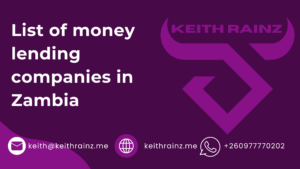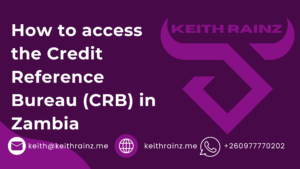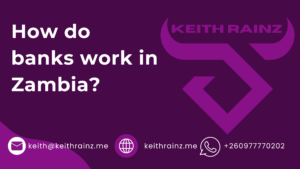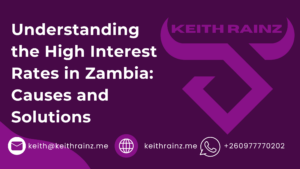In Zambia, collateral-based lending is a popular method of securing loans. Under this arrangement, borrowers must pledge an asset as collateral, providing security for the lender in case of loan default. This system is widely used by banks, microfinance institutions, and even informal lenders. Should a borrower fail to repay the loan, the lender can seize the pledged asset to recover their money.
How Collateral-Based Loans Work in Zambia
- Loan Approval Process: When applying for a loan, lenders assess both the borrower’s creditworthiness and the value of the asset offered as collateral. The loan amount is usually a percentage of the collateral’s market value.
- Collateral Requirement: Collateral acts as a safeguard for the lender, reducing the risk of lending. The type of asset required varies based on the lender and the size of the loan.
- Risk Mitigation: By using collateral, lenders lower their exposure to risk since they can sell the asset in case of default to recover the loan amount.
Common Types of Collateral
- Real Estate: Property, including land and buildings, is the most common form of collateral, especially for large loans. Title deeds are required as proof of ownership.
- Vehicles: Cars and other motor vehicles can be used as collateral, particularly for medium-sized loans. Vehicle registration papers are often transferred to the lender temporarily.
- Livestock and Agricultural Assets: In rural areas, farmers may use livestock, equipment, or crops as collateral.
- Machinery and Equipment: Businesses often use industrial equipment or machinery to secure loans for expansion.
- Fixed Deposits and Savings: Some borrowers use their savings or fixed deposits as collateral, especially for short-term loans.
- Inventory or Stock: Businesses can use their inventory as collateral to secure working capital loans.
Benefits of Collateral-Based Lending
- Access to Larger Loans: By offering collateral, borrowers can access larger loan amounts compared to unsecured loans.
- Lower Interest Rates: Collateral-based loans typically come with lower interest rates, as they present less risk to lenders.
- Borrower Flexibility: Different types of assets can be used as collateral, giving borrowers various options.
- Increased Lending Confidence: Lenders feel more secure issuing loans when an asset backs the loan, fostering greater trust between borrowers and financial institutions.
Challenges of Collateral-Based Lending in Zambia
- Limited Access to Collateral: Many Zambians, especially in rural areas, lack assets like land with formal title deeds, limiting their access to formal credit.
- Inconsistent Property Rights: Land tenure issues and unclear property rights complicate the use of land as collateral, particularly in areas governed by customary law.
- Asset Valuation and Depreciation: Non-real estate assets like vehicles and machinery may lose value over time, reducing the amount borrowers can secure or the lender’s ability to recover full loan amounts.
- Foreclosure and Asset Seizure: In the event of default, the process of seizing assets, especially real estate, can be slow and complicated, often requiring legal action.
- Lack of Financial Literacy: Many borrowers may not fully understand the consequences of defaulting on collateral-based loans, such as losing essential assets.
Regulatory and Institutional Factors
- Bank of Zambia Regulations: The central bank sets guidelines for collateral-based lending, but enforcement may vary, especially with non-bank lenders.
- Credit Reference Bureaus: These institutions provide credit data to help lenders assess borrower risk, though their reach is still limited in Zambia’s informal sectors.
- Collateral Registry: Zambia has established a Collateral Registry under the Movable Property (Security Interests) Act, enabling individuals and businesses to use movable assets as collateral. This system enhances access to credit, particularly for small and medium enterprises (SMEs).
Emerging Trends and Solutions
- Digital Platforms: Some lenders are utilizing digital tools to streamline the loan approval process, including digital asset valuation for collateral.
- Microfinance Institutions: These institutions offer collateral-based loans to individuals and small businesses that may not qualify for traditional bank loans. They often accept unconventional forms of collateral.
- Alternative Collateral: Lenders are becoming more flexible by accepting alternative assets, such as future harvests, receivables, or insurance policies.
Conclusion
Collateral-based lending provides a vital source of credit for borrowers in Zambia, especially for larger loans. However, challenges such as limited access to assets, inconsistent property rights, and asset depreciation hinder the system’s full potential. By addressing these issues through financial literacy programs, legal reforms, and innovative approaches to collateral, this form of lending can become more inclusive and accessible, particularly for underserved communities.

I am Keith Rainz a content creator in Zambia. I specialize in forex and crypto trading. You can WhatsApp me via +260977770202.







